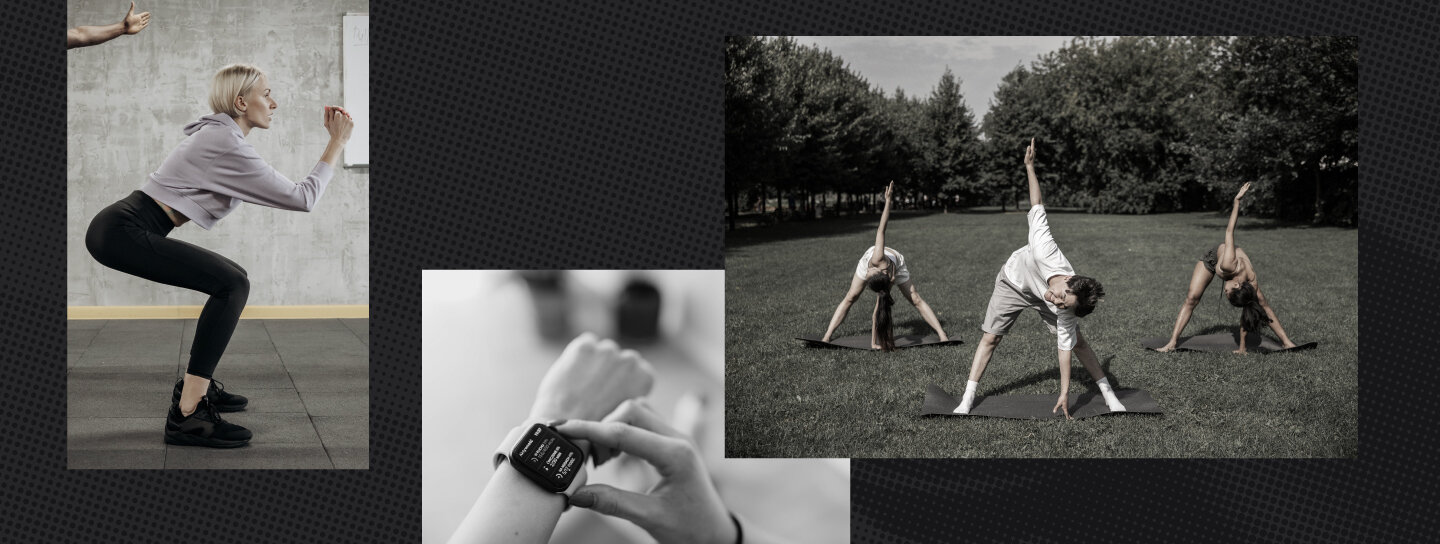Warming Up: Is it Necessary for a Successful Workout?
AUG 10, 2021
Warming Up: Is it Necessary for a Successful Workout?
Warming up is often upheld as a critical component of any workout — but is it always necessary?
By House Fitness
What is Warming Up?
‘Warming up’ has become an ambiguous term in the fitness industry. For the sake of this article, it is important to clarify what we mean by it.
When we’re talking about warming-up, our definition is: a few minutes of aerobic work (between 5-10) followed by some dynamic stretching, and lastly, activation exercises. The aerobic work should be moderate-intensity cardio at a sustainable pace; the dynamic stretching should be intentional, light movements that prepare the body for exercise; and the activation exercises should be targeting a specific muscle (or area of the body.) For example, if you are going to train squats with your trainer, you will benefit from core, glute, inhibited muscle activation exercises. In doing this, you’ll become more connected to that specific muscle group and increase your mind-muscle connection.
What is the Goal of Warming Up?
The goal of warming up is to prepare your body for the workout ahead. By going through these movements prior to a workout, you’re raising your body’s temperature and increasing blood flow to your muscles and brain. Through this, you’re decreasing your risk of injury and preparing your body to tackle high-intensity exercises.
Should You Always Warm-Up Before Every Workout?
Warming up is often cited as a critical component to a successful workout… but are we as dependent as we think we are on warm-ups to actually yield the results we’re setting out for?
Though I am a proponent of warming up effectively, I believe that there is still a lot of merit in being able to be ready without a warm-up. It is key to be aware of the benefits to both.
Why You Should Warm-Up
As you warm up and increase your blood circulation, a multitude of cascading effects occur within the body. You’ll experience an increased elasticity in tissues, increased muscle activation, increased oxygen to the brain (which improves memory and cognitive function), increased pulmonary system function, increased joint lubrication, and more. All of these effects lead to a decreased chance of acute injury by increasing your flexibility and preparing your mind, heart, and body in order to not become too strained during your workout.
When executed with intention,* a warm-up allows you to prioritize what you’ve set out to accomplish in your workout. It will help you mentally prepare by giving your mind the space it needs to focus on your workout ahead, and, it improves your overall athletic performance through increased blood flow circulation.
*If you’re attempting to warm up without being intentional and purposeful, the warm-up has fewer benefits.
Why You Shouldn’t Warm-Up
Though the benefits of warming up are a lot more commonly known than the counterpoints, it is still important to be aware of what you can accomplish when you pass on a warm-up.
It isn’t as effective for all types of workouts.
For strength-based training and other forms of high-intensity training, you’re going to reach a better potential by engaging in a warm-up prior. However, something like a distance-based bike ride may not have as much of a benefit for warming up. Additionally, light workouts often do not require warm-ups because the intensity is not as high.
You can’t warm up in real life.
Outside of the gym, you’re a busy person. There’s not always time to prep before you jump into a task. You may be running a business, running around with kids, managing your home life, and pursuing other passions. With this lifestyle, sometimes something has got to give. You can’t always prep before you have to go out and do something. It is a skill to be able to be ready at any time. If you’re only allowing yourself to workout when you have the time to fit in a warm-up, you’re missing out on the opportunities that a workout can bring (such as ‘you’ time, endorphin release, sweating, cardiovascular work.)
You save time.
Simply put, not warming up can save time. If you only have time for a quick workout in-between errands in your day, there is more value in jumping into the bulk of your workout rather than not work out at all. Remember: action is better than inaction.
Challenges your ability to not prepare.*
When you don’t prepare, your workout becomes more challenging. Though I would not recommend this for every client, not engaging in a warm-up could be beneficial because the challenge will bring change. Oftentimes, we see the biggest leaps in improvement (in both life and fitness) when we are challenging ourselves; the times when we are the most uncomfortable.
Helps you to establish your baseline.
By not preparing beforehand, you can establish your true fitness baseline. This will not only be beneficial knowledge for you and your coach in designing a program that best fits your needs, but it may also bring you some awareness to see where your ‘everyday’ ability is. You might surprise yourself.
*I do not recommend skipping a warm-up when you’re going for maximum-output exercises (such as a maximum speed run or time trial.) You will increase your chance of injury without warming up.
The Bottom Line
Warm up when you can. If you can’t, focus on the core of your workout routine. You will still yield results. Though you are more likely to reach your highest potential by warming up prior to a workout, there is still merit in jumping into a workout without a lot of prep work. It is a form of adaptability to do both.
If you would like more insight on how to structure workouts that are ideal for your lifestyle, take a look at our Athlete Maker Program and get connected to one of our knowledgeable trainers.
If you would like more insights on whether warming up is right for you…
take a look at our Athlete Maker Program and get connected to one of our knowledgeable trainers.







